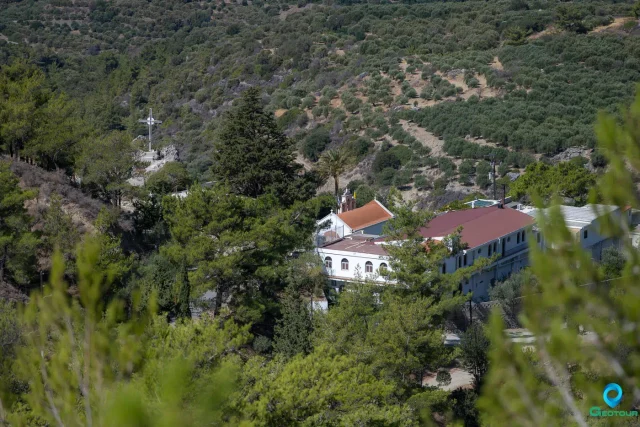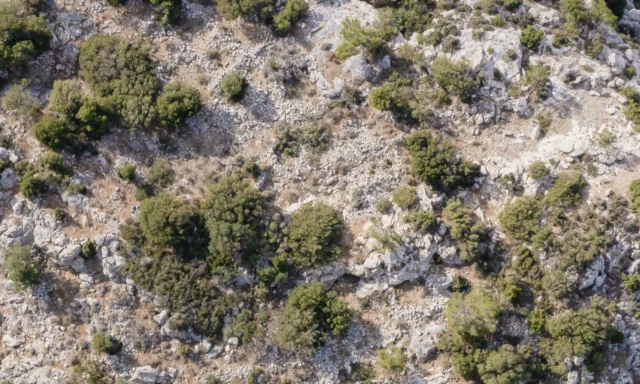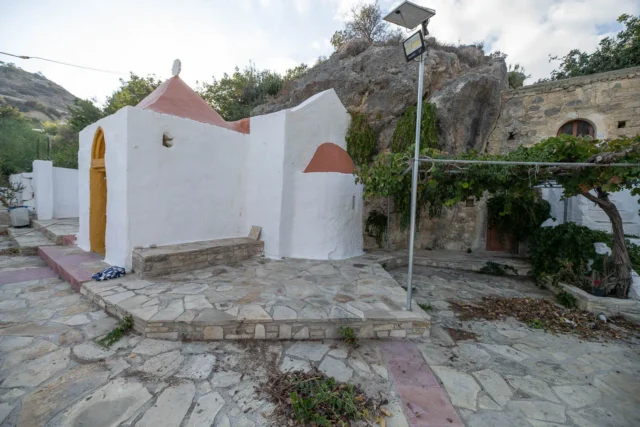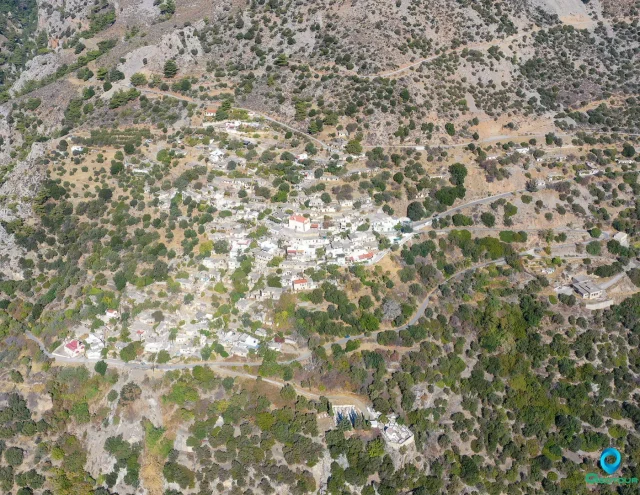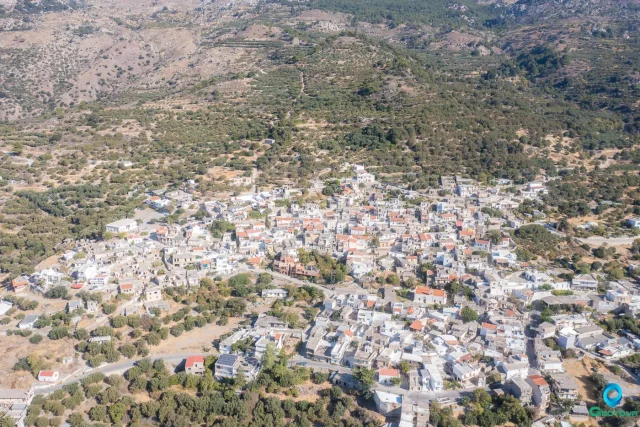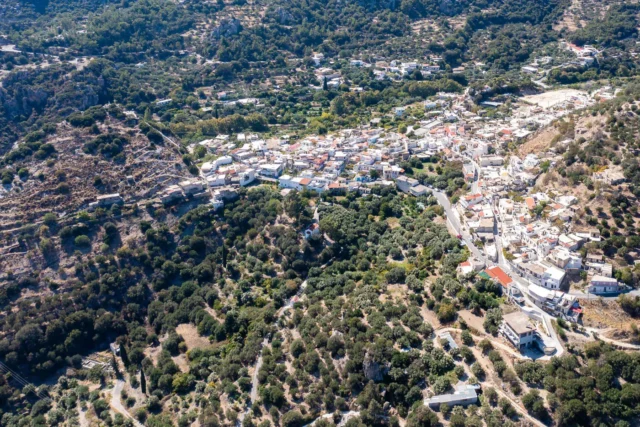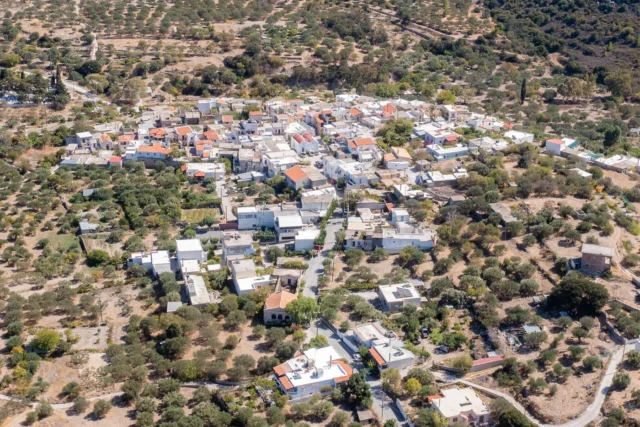26
listings found
Categories
Active filters:
Holy Monastery of Panagia Exakousti
Located in Malles, Ierapetra, at an altitude of 540 meters, this active convent was significantly renovated in the late 19th century by the monk Ananias Barberakis. The complex centers around a single-aisled main church dedicated to the Nativity of the Theotokos and an older, cave-like chapel of the Transfiguration. After periods of decline and looting, it was revived in 1961 and converted to a convent in 1976, now housing workshops for weaving and tailoring.
Ecce! future dialects
A nonprofit cultural & civic platform in Greece creating new dialects for public engagement at the intersection of art & technology.
Gournia Minoan settlement
Gournia, a Minoan town on Crete's north coast, presents a complete example of a small settlement.
Excavations, starting with Harriet Boyd Hawes, reveal houses, a palace, and a street network, reflecting Minoan urbanism. The site's history spans from the Neolithic to Late Minoan periods, witnessing growth, destruction, and limited reoccupation. Discoveries include artifacts, cemeteries (Sphoungaras, North), and architectural features like the 'Shore House,' suggesting maritime connections. The town's layout, with a main street and organized blocks, highlights urban planning. Gournia's cultural and economic context includes regional trade and religious practices. Ongoing projects reexamine its architecture, offering insights into Minoan civilization and its connections to other Aegean settlements.
Azoria ancient settlement
Azoria, located on Crete, is an archaeological site revealing urban development from the Bronze Age to the Archaic period. Notably, it grew into a regional center during the Early Iron Age and reached its peak in the 6th century BC. Excavations show organized city planning, monumental buildings, and a shift from dispersed villages to a centralized settlement. The site experienced destruction by fire in the 5th century BC, followed by limited Hellenistic reoccupation. Azoria's stratification and botanical/faunal studies provide insights into socioeconomic changes and landscape transformations. Research highlights its role in Crete's urbanization, revealing changes in settlement patterns and social structures. The site's strategic location and architectural renovations underscore its importance in understanding the development of the Cretan polis.
Monastiraki, Ierapetra
Monastiraki (Monastirakion) is a small village in Lasithi, Crete, situated on Mount Thrypti's slopes, near Ha Gorge, with views of Mirabello Gulf. Located 5km from Pahia Amos and 11km from Ierapetra, it's part of the Pahia Amos community. Historically, it was mentioned by Castrofylakas around 1853, possibly built on a former monastery site dedicated to Saints Constantine and Helen. The 2021 census recorded 21 residents. The village experienced population fluctuations over the years, from 10 families in 1834 to a single resident for some time, and now sees a revival with home renovations and infrastructure improvements. Points of interest include the Byzantine churches of Agios Stefanos and Agios Georgios, alongside two traditional cafes serving Cretan cuisine.
Thrypti, Ierapetra
Thrypti is a small mountain settlement in eastern Crete, within the municipality of Ierapetra, Lasithi. Nestled in the Thrypti mountains, near the Ha Gorge and Afentis Christos peak, it boasts a unique pine forest. The village has historical significance, with evidence of Minoan and Byzantine settlements. Landmarks include the churches of Nativity of Theotokos, Agios Ioannis Prodromos, Timios Stavros, and Agia Anna. The economy is based on viticulture and animal husbandry, though many residents have relocated. Access is via paved road from Pano Chorio and dirt roads from Oreino and Kavousi.
The Archaeological Collection of Ierapetra
The Archaeological Collection of Ierapetra, housed in the former Ottoman School built in 1899, offers a captivating journey through the history of the region, from the Bronze Age to the […]
Hierapytna
Hierapytna, located on the southern coast of Crete, was founded in the Geometric period (c. 9th century BC). The city was a major hub for trade and commerce in ancient times and played a significant role in the island's political and military affairs. Hierapytna flourished during the Hellenistic and Roman periods. It became part of the Byzantine Empire after the division of the Roman Empire. Following the Arab conquest of Crete in the 9th century, Hierapytna was abandoned. Modern archaeological investigations have revealed a wealth of information about the city, including its city walls, agora, temple, theater, and private houses.
Mesokastellas between Kalamafka and Anatoli
Mesokastellas Fortress: Byzantine ruins in the Dikti Mountains, Crete. Strategically positioned with panoramic views, occupied from prehistoric to Venetian times.
Monastery of Panagia Pantanassa Vagioneas
Located in the Vagioneas area near Anatoli, Ierapetra, this religious site is dedicated to the Life-Giving Spring. Originally a women's monastery founded in 1398 by the prominent anti-Catholic hieromonk Neilos Damilas, it housed a significant school. After Damilas's death, the monastery declined, with its properties transferred to the Patriarchate of Alexandria until 1870. Today, the only surviving structure is a small church, which combines a single-aisled cave church with an 1860 square narthex.
Ancient Oleros
Oleros was an ancient Cretan city inhabited from the Early Iron Age until the Roman period. It was known for its olive oil production and political involvement in Crete.
Christos, Ierapetra
Christos, a historic village in Ierapetra, Crete, sits on the slopes of the Dikti mountains. Near the ruins of the ancient city of Mala, with Mycenaean fortifications, the village dates back to the second Byzantine period. Records from 1577 mention Christos as Simi Christo. A 1583 census listed 121 residents. The village is 28 kilometers from Ierapetra and features the Church of the Savior Christ and "The Tower," a Venetian-era, two-story building. Today, Christos is a small village with a population of 50.
Metaxochori, Ierapetra
Located on the eastern slopes of the Dikti mountains at 560 meters altitude in Lasithi, this settlement was known as Parsas until 1955 and Parissea in Venetian records. It is the birthplace of the prominent religious figure Meletios Metaxakis (1871-1935), who served as Patriarch of Constantinople and Alexandria; his historic house is under restoration. Today, it is a quiet village with few residents, noted for its traditional houses and natural features like the Klisidi and Neraidogoula caves.
Malles, Ierapetra
Malles, a village in Crete, has a rich history dating back to ancient times. Once an independent city-state known as Malla, it thrived during the Venetian period and played a role in the Cretan resistance against the Ottomans. Today, it is a peaceful village with an economy based on olive oil production. Visitors can explore the ruins of the ancient city, hike through the Sarakina Gorge, and admire the well-preserved frescoes in the Panagia Mesochoritissa church. Malles offers a blend of history, natural beauty, and modern amenities, making it an ideal destination for those seeking an authentic Cretan experience.
Anatoli, Ierapetra
Anatoli, a historic village nestled on Mount Dikti's southern slopes in Crete, boasts a rich tapestry of Venetian and Ottoman history. Its strategic location, 610 meters above sea level, offered panoramic views of the Libyan Sea. The village's name, meaning "to rise," reflects its elevated position. Venetian presence in the 16th century is documented by Francesco Barozzi and the Castrophylacas census, with remnants like the Tower of Lakerdas in Teichio. Anatoli thrived under Ottoman rule, participating actively in Cretan revolts and giving rise to notable figures like Emmanuel Lakerdas. The village retains its traditional character, with stone houses and the old Kato Vrysi. Religious landmarks include Byzantine monasteries and churches adorned with icons. Anatoli's cultural heritage is preserved through events like the Bean Soup Festival. The village is also the birthplace of renowned violin player Pantelis Baritantonakis. Modern Anatoli includes the newer settlements of Nea Anatoli, Stomio, and Ammoudares.
Kalamafka, Ierapetra
Kalamafka, a village in eastern Crete's Lasithi Mountains, boasts a rich history dating back to the Minoan era. Archaeological finds at Meso-Kastela and Kissos reveal ancient habitation, including a possible Minoan villa and the city of Larisa. Venetian and Ottoman records document the village's continued presence. Kalamafka's natural beauty includes the Kalamafkianos River, Kefalovrysi springs, and Kastelos hill with the Church of the Holy Cross. The village also features the churches of Agios Antonios, Agios Georgios, and Timios Stavros. The population, around 359, resides near Ierapetra and engages in agriculture and tourism.
Mournies, Ierapetra
Mournies is a village in eastern Crete's Ierapetra municipality, situated at 310m altitude. A significant revolutionary center during Ottoman rule, its history is marked by the German occupation. In September 1943, as a reprisal, German forces executed 21 men at a location known as Seli in Sfakoura and subsequently burned the entire village, declaring it a “dead zone.” Points of interest include an old stone fountain and the parish church of Agios Charalambos. The village has experienced a significant population decline since the 19th century.
Kavousi, Ierapetra
Kavousi, a village in eastern Crete, boasts a rich history dating back to antiquity. Pre-Minoan settlements like Vrontas and Kastro, along with the Archaic city of Azorias, surround the village. Kavousi flourished under Venetian rule, mentioned in 1577 by Francesco Barozzi and noted in the 1583 Castrofylakas census. Byzantine churches, including the 15th-century Holy Apostles with frescoes, dot the landscape. The village, situated at the foot of Mount Thrypti, is known for olive oil production. Kavousi is part of the municipality of Ierapetra and features a community office, medical clinic, and cultural association. The Holy Trinity Parish of Kavousi encompasses 24 churches, including the main church of Agia Triada and the older Dormition of the Mother of God and Agios Ioannis Theologos. The village is accessible by bus and offers various amenities like grocery stores, bakeries, cafes, and guesthouses.
Meseleroi, Ierapetra
Meseleroi is a settlement located in the Lasithi regional unit on the island of Crete, Greece. It belongs to the Municipality of Ierapetra
Lithines, Ierapetra
Lithines, a historic Cretan village in Siteia, is known for its Byzantine and Venetian heritage. The village, possibly named after the Litino family, features the 10th-century Church of the Virgin Mary with 13th-14th-century frescoes and the miraculous icon "Our Lady of Lithines". The pre-15th century Agios Athanasios church houses the Vlachos family tomb. The Byzantine Holy Apostles church at Adromili has 14th-century frescoes. A Venetian tower, destroyed in 1828, once stood in the village center. Lithines' architecture reflects the 17th-19th centuries, earning it historical monument status. The village has an agricultural cooperative producing olive oil and a cultural center in the renovated old school building. The population in 2011 was 322.









